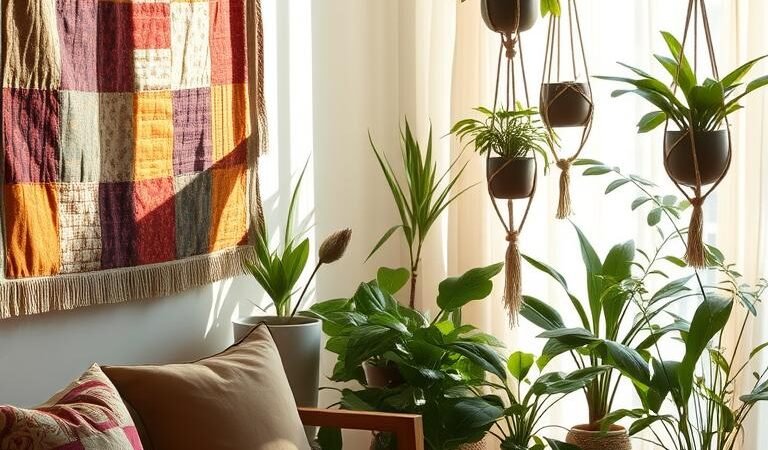Discover the art of turning secondhand fabrics into stunning decor pieces. This growing trend combines sustainability with style, offering a unique way to refresh your space. Whether you’re a seasoned DIYer or a beginner, there’s something for everyone.
Using simple techniques like iron-on adhesives and creative framing, you can create modern accents without sewing skills. Imagine a framed section of a vintage rug becoming a statement wall art piece. The possibilities are endless.
This guide aims to blend eco-conscious practices with high-style results. By repurposing materials from your local thrift store, you can craft personalized decor that tells a story. Let’s explore how to make your space both beautiful and sustainable.
Key Takeaways
- Learn how to repurpose secondhand fabrics into modern decor pieces.
- Discover the benefits of sustainable interior design through textile upcycling.
- Explore easy techniques like iron-on adhesives and creative framing.
- See real-world examples, such as framed rug sections as wall art.
- Combine eco-conscious practices with stylish home decor results.
Why Thrifted Textiles Are Perfect for Home Decor
Secondhand textiles offer unmatched character and history. Each piece tells a story, with patterns and textures that modern fabrics often lack. These materials bring a unique personal touch to your space, making your decor truly one-of-a-kind.
One of the biggest advantages is cost savings. For example, framing a vintage tea towel can cost as little as $5, compared to $100+ for retail art prints. This makes thrifted home decor both affordable and stylish.
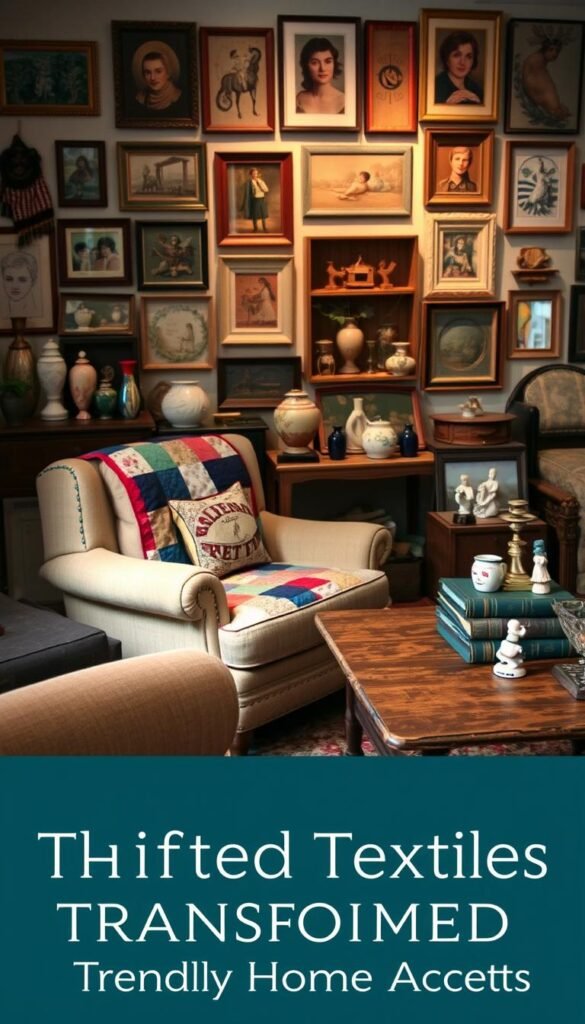
Versatility is another key benefit. Curtains can become shower drapes, while scarves transform into table runners. This adaptability allows you to experiment with different looks without breaking the bank.
Take inspiration from a success story: a $2 ironstone pitcher paired with faux daisies created stunning spring decor. This shows how small, thoughtful touches can make a big impact.
Lastly, mid-century textiles are often more durable than fast-fashion equivalents. Their quality ensures they stand the test of time, making them a smart choice for eco-conscious decorators.
- Unmatched character with history-rich patterns.
- Cost savings compared to retail home textiles.
- Versatile uses, from curtains to table runners.
- Durable materials that last for years.
How to Source the Best Thrifted Textiles
Uncover hidden treasures in secondhand fabrics for your decor projects. The key to success lies in knowing where to look and what to look for. With a little patience and a keen eye, you can find materials that are both affordable and full of character.
Where to Find Quality Fabrics
Start your search at prime locations like estate sales, church rummage sales, and the textile sections of thrift stores. These spots often house unique vintage pieces that can elevate your decor. For more curated finds, check out Habitat for Humanity Restore or online platforms like Kate Pearce Vintage.
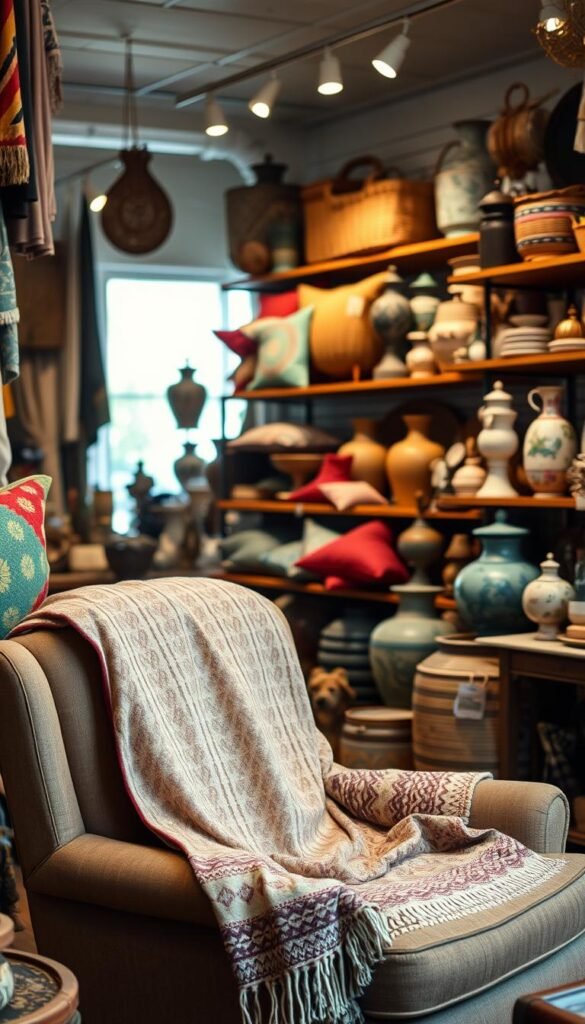
What to Look for When Thrifting
When shopping, focus on quality markers like tight weaves, intact selvages, and natural fiber dominance. These features ensure durability and longevity. Avoid items with musty odors, irreversible stains, or weakened seams, as they may not be worth the effort.
- Pro Tip: Hunt off-season for the best deals—wools in summer and linens in winter.
- Don’t overlook unexpected goldmines, like embroidered tea towels in kitchenware aisles.
With these tips, you’ll be well-equipped to find secondhand treasures that breathe new life into your space. Happy hunting!
Essential Tools for Transforming Thrifted Textiles
Revive old fabrics with the right tools for stunning DIY projects. Whether you’re a seasoned crafter or a beginner, having the proper equipment makes all the difference. From cutting to framing, these essentials will help you create beautiful decor pieces with ease.
Start by curating a textile revival kit. Include tools like Gingher shears for precise cuts, a Teflon pressing cloth for safe ironing, and 3M adhesive sprays for quick bonding. These items ensure your projects are both professional and durable.
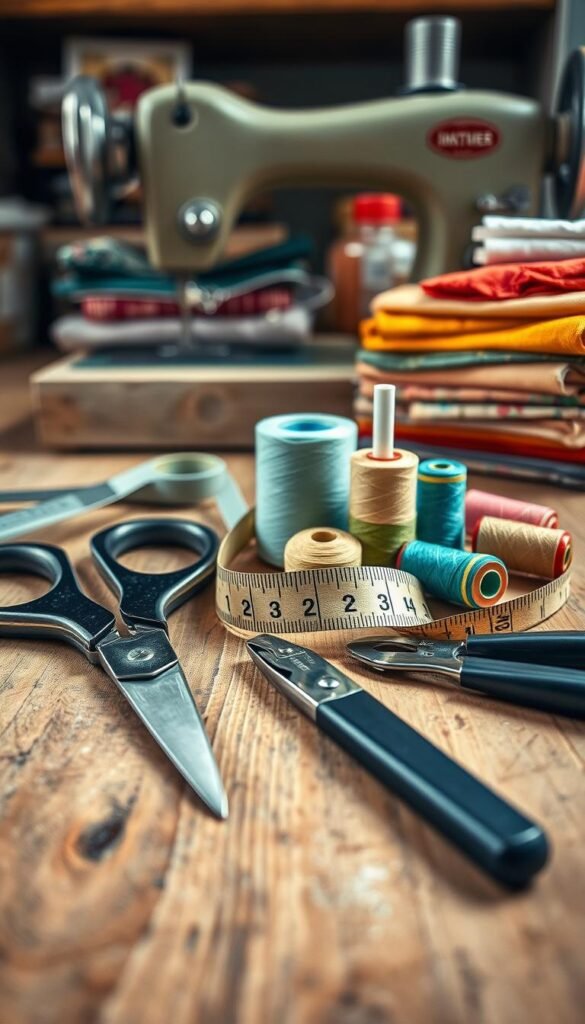
For no-sew solutions, hem tape is a game-changer. Use it to create pillow covers or mend edges without a sewing machine. It’s a simple yet effective way to achieve polished results. Another creative technique is shadowbox framing, perfect for showcasing rug fragments as wall art.
Cleaning vintage fabrics is crucial. Use OxiClean soaks to brighten linens and freeze items to prevent pests. These wash protocols ensure your materials are safe and ready for use. Lastly, explore multi-use tools like curtain ring clips, which double as hardware for cafe curtains.
| Tool | Use |
|---|---|
| Gingher Shears | Precise fabric cutting |
| Teflon Pressing Cloth | Safe ironing for delicate fabrics |
| 3M Adhesive Sprays | Quick bonding for fabric projects |
| Hem Tape | No-sew solutions for edges and covers |
| Curtain Ring Clips | Multi-use hardware for curtains |
With these tools, you can breathe new life into secondhand materials. For more inspiration, check out Blesserhouse, where you’ll find creative ideas to elevate your DIY projects.
Transforming Thrifted Textiles into Trendy Home Accents
Breathing new life into secondhand finds can elevate your decor effortlessly. With a little creativity, you can turn overlooked pieces into stunning focal points. Let’s explore five simple yet impactful ways to repurpose materials for a fresh, personalized look.
Start with bold wall statements. Use 70s drapery panels as oversized art pieces. Hang them with decorative rods or frame sections for a retro-modern vibe. This approach adds texture and color to any room, making it a conversation starter.
Next, try chair reupholstery with kitchen towels. The stapler method is perfect for beginners. Simply wrap the towel around the seat and secure it with staples. This quick update can transform a tired chair into a stylish statement piece.
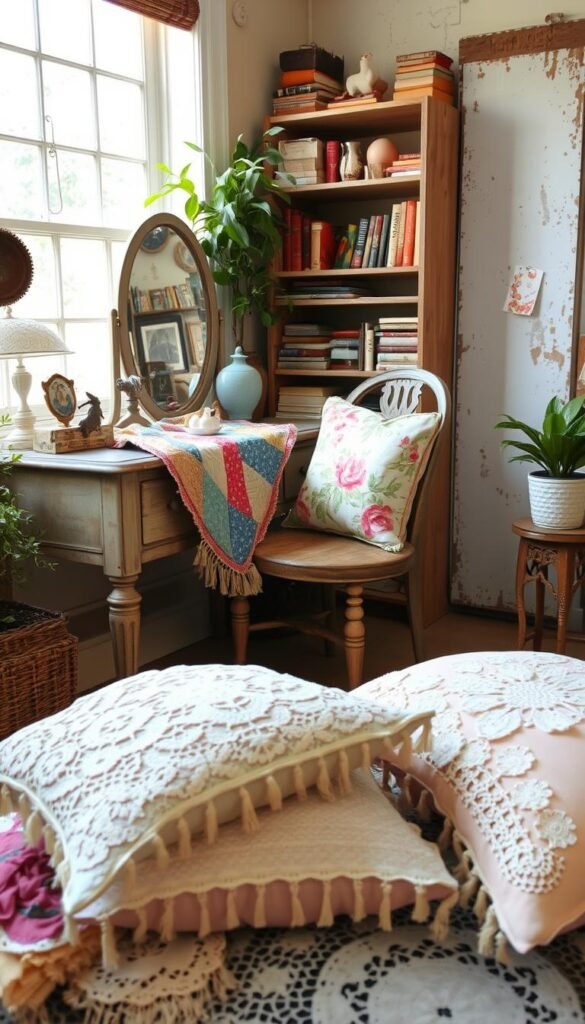
Scarves can also shine as table runners. Add fringed edges for a bohemian touch. This simple conversion brings pattern and elegance to your dining or coffee table. It’s a budget-friendly way to refresh your space.
For cozy accents, turn vintage bedspreads into boho floor poufs. Stuff them with foam or old pillows for a plush, inviting feel. These poufs are perfect for lounging or adding extra seating in small spaces.
Finally, frame linen napkins as herb-dye art. Use natural dyes like turmeric or beet juice to create unique patterns. This project combines sustainability with artistry, resulting in one-of-a-kind wall decor.
| Project | Materials Needed |
|---|---|
| Wall Art | Drapery panels, decorative rods |
| Chair Reupholstery | Kitchen towels, staple gun |
| Table Runner | Scarves, scissors |
| Floor Poufs | Vintage bedspreads, stuffing |
| Herb-Dye Art | Linen napkins, natural dyes |
For more inspiration on affordable decor, check out these cozy living room ideas. With these tips, you can create a space that’s both stylish and sustainable.
DIY No-Sew Projects for Beginners
Crafting beautiful decor without sewing is easier than you think. With a few simple tools and creative ideas, you can turn fabric remnants into stunning accents for your home. These projects are perfect for beginners and add a personal touch to any room.
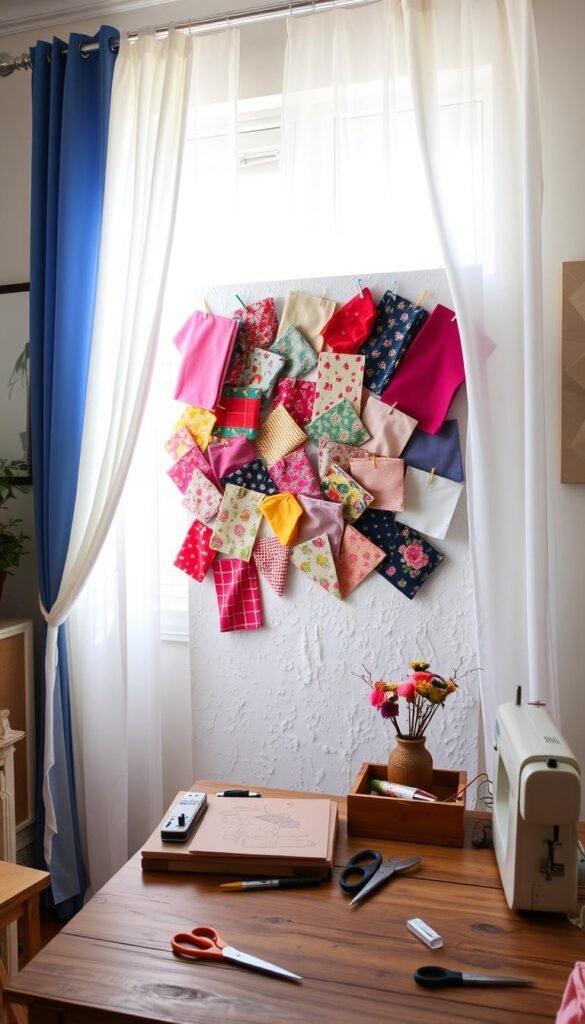
Fabric Wall Art
Create eye-catching wall art with fabric remnants. Stretch the material over a canvas frame and secure it with a staple gun. This technique works well with bold patterns or vintage pieces. For a cohesive look, mix rug fragments with embroidered doilies in IKEA frames.
Use color theory to pull accent hues from Persian rug wall hangings. This approach ties the decor together and adds depth to your space. A blogger’s H&M towel art project cost just $5, compared to $75 for a retail print.
Throw Pillow Covers
Upgrade your sofa with no-sew pillow covers. Use fusible web to create envelope closures on vintage tea towels. This method is quick and requires no sewing skills. Choose fabrics with interesting textures or patterns for a unique look.
For a polished finish, iron the edges before bonding. This project is a budget-friendly way to refresh your living space. Plus, it’s a great way to repurpose materials you already own.
- Fabric Wall Art: Stretch remnants over canvas frames for bold statements.
- Throw Pillows: Use fusible web for easy envelope closures.
- Gallery Walls: Mix rug fragments and doilies for a cohesive look.
- Color Tips: Pull accent hues from existing decor for harmony.
- Budget-Friendly: Save money with affordable DIY projects.
Creative Ways to Use Thrifted Curtains and Tablecloths
Give your space a fresh look with creative ideas for repurposing curtains and tablecloths. These versatile fabric pieces can be transformed into functional and stylish accents for your living space. With a little imagination, you can create decor that’s both unique and budget-friendly.
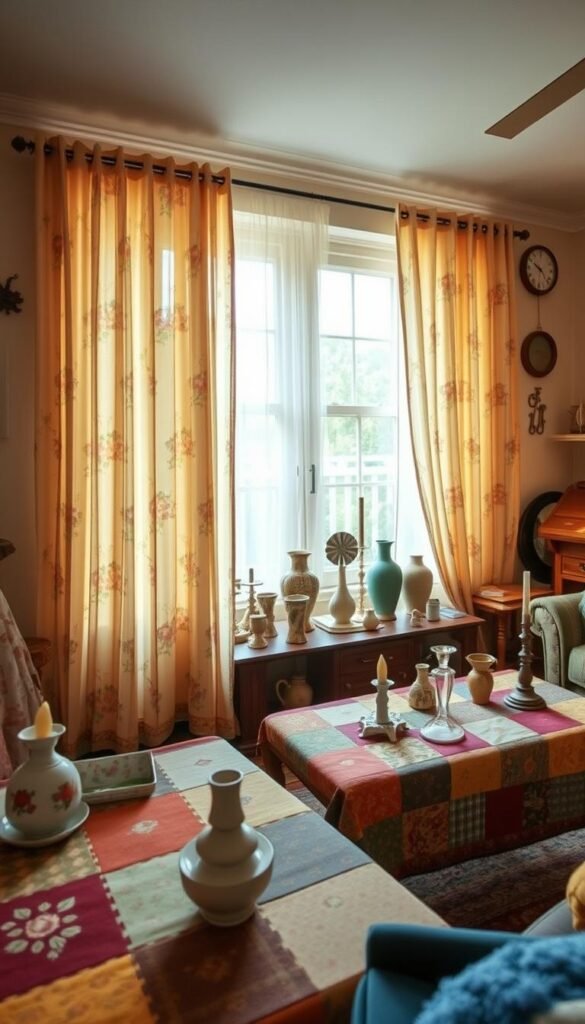
DIY Shower Curtains
Turn damask tablecloths into luxurious shower drapes using grommet kits. This simple hack adds elegance to your bathroom while repurposing store finds. For a double-length curtain, layer two panels together for a dramatic effect. It’s an easy way to upgrade your space without breaking the bank.
Another idea is to layer lace curtains over modern sheers. This combination creates a Grandmillennial-inspired window treatment that’s both timeless and chic. The soft textures add warmth and character to any room.
Table Runners and Centerpieces
Style embroidered linens as seasonal table runners. Use fall plaids for cozy autumn vibes or spring florals for a fresh, cheerful look. These pieces can also double as centerpieces when paired with candles or greenery.
Repurpose heavy drapes into slipcovers for ottomans or bench seats. This not only protects your furniture but also adds a touch of sophistication. For a finishing touch, add grosgrain ribbon borders to curtains for a polished upgrade.
- Convert tablecloths into shower drapes with grommet kits.
- Layer lace curtains over sheers for a timeless window treatment.
- Use embroidered linens as seasonal table runners.
- Turn heavy drapes into stylish slipcovers for furniture.
- Add grosgrain ribbon borders for a custom curtain upgrade.
Revamping Old Rugs and Blankets
Old rugs and blankets hold untapped potential for creative projects. With a little imagination, you can turn these forgotten fabrics into stunning decor pieces that add warmth and character to your space. Whether you’re salvaging stained rugs or rebinding frayed edges, the possibilities are endless.
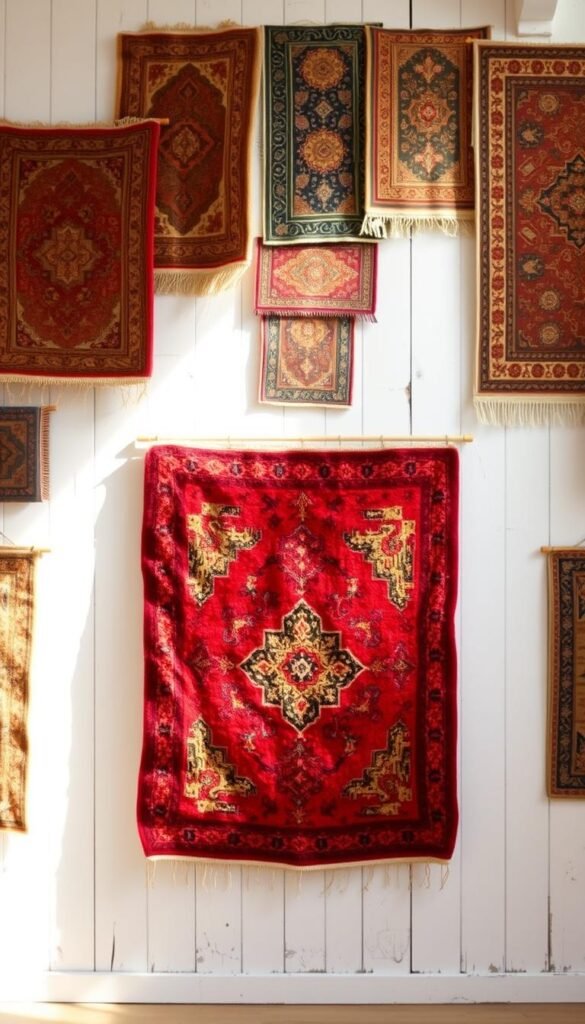
Textile Art for Walls
Turn damaged rugs into eye-catching wall art. Cut intact sections and frame them for a bold statement. This technique works especially well with vintage wool rugs, adding texture and history to your walls. For a cohesive look, mix and match patterns to create a gallery wall.
Another idea is to overdye yellowed linens with Rit Dye. This allows you to customize the color to match your decor. Framed herb-dye art is a unique way to showcase your creativity while repurposing old materials.
Cozy Throws and Accents
Transform blankets into cozy accents for your home. Rebind frayed quilt edges with pom-pom trim for a boho-inspired throw. This simple update can breathe new life into worn-out pieces, making them both functional and stylish.
For pet lovers, braid sweater blankets into pet beds or hearth cushions. These projects are not only practical but also add a touch of charm to your space. Pair them with a $5 plant stand styled with chenille lap blankets for a cohesive look.
| Project | Materials Needed |
|---|---|
| Wall Art | Damaged rugs, frames |
| Herb-Dye Art | Yellowed linens, Rit Dye |
| Boho Throws | Frayed quilts, pom-pom trim |
| Pet Beds | Sweater blankets, stuffing |
These ideas show how easy it is to revamp old rugs and blankets into functional and stylish decor. With a little creativity, you can create pieces that are both beautiful and sustainable.
Styling Tips for Thrifted Textile Decor
Elevate your space with timeless charm by blending vintage and modern elements. This approach creates a balanced aesthetic that feels both curated and personal. Whether you’re decorating with bold prints or subtle textures, these tips will help you achieve a cohesive look.
Start by pairing bold vintage prints with solid-color modern furniture. For example, a Suzani textile framed above a mid-century credenza becomes a striking focal point. This mix of old and new adds depth and character to your living space.
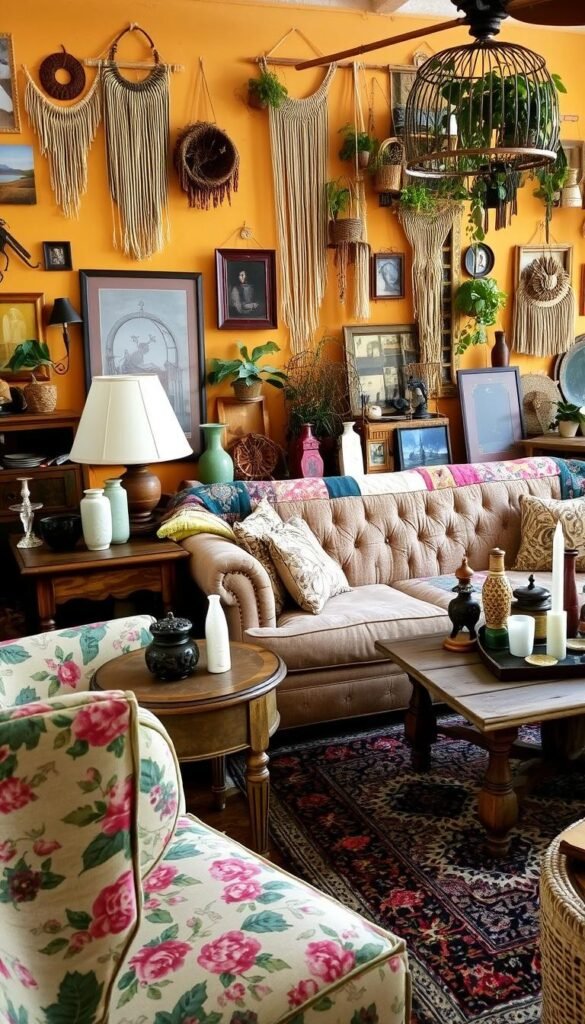
Layering textures is another effective technique. Drape a crochet blanket over a leather sofa or add kilim pillows to a linen bed. These combinations create visual interest and warmth, making your home decor feel inviting and lived-in.
Use color repetition to tie your design together. Echo the hues of your curtains in throw pillows or accent pieces. This subtle connection creates harmony and ensures your space feels intentional and polished.
For a creative touch, try a blogger’s sofa fringe hack using upholstery tacks. This simple update adds a bohemian flair to your furniture, showcasing how small changes can make a big impact. With these tips, you can transform thrift store finds into stylish, personalized decor.
Eco-Friendly Benefits of Thrifted Textiles
Choosing secondhand fabrics for decor is a step toward a greener planet. By reusing materials, you help reduce landfill waste, which amounts to 4.5 billion pounds annually. This practice not only saves resources but also promotes a more sustainable lifestyle.
One of the most significant impacts is water conservation. Upcycling a single cotton sheet saves approximately 700 gallons of water. This is a stark contrast to the environmental cost of producing new items. Additionally, reusing existing fabrics reduces microplastic pollution, a growing concern in the textile industry.
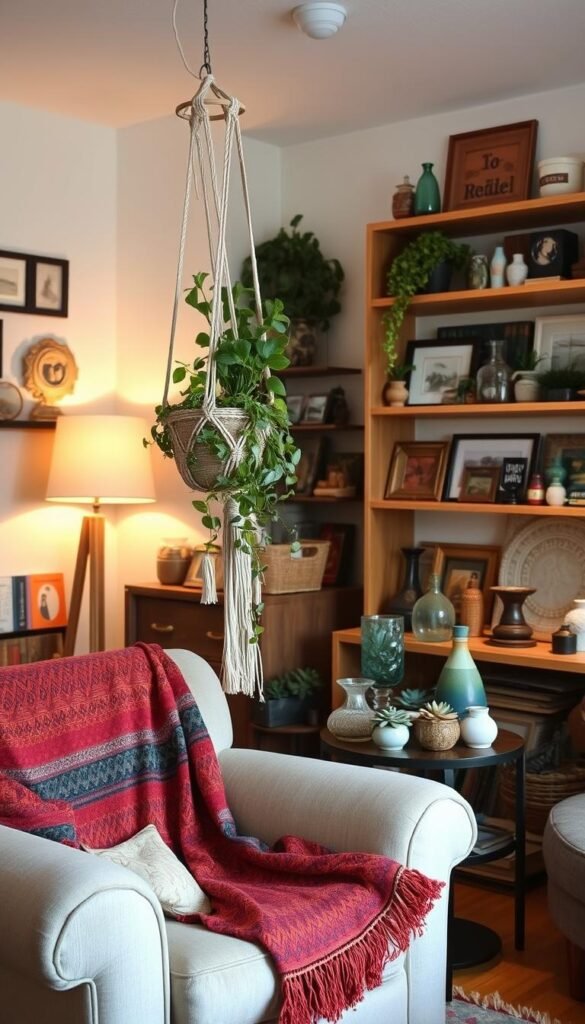
Supporting secondhand shopping also benefits communities. Many thrift stores, like Habitat for Humanity, use profits to fund local programs. This creates a positive cycle where your decor choices contribute to meaningful causes.
Health advantages are another perk. Vintage fabrics often lack the off-gassing chemicals found in new items. This makes them a safer choice for your thrifted home. A blogger’s 10-year vintage linen collection showcases their durability and timeless appeal.
| Benefit | Impact |
|---|---|
| Water Savings | 700 gallons per upcycled cotton sheet |
| Microplastic Reduction | Less pollution from reused fabrics |
| Community Support | Profits fund Habitat for Humanity programs |
| Health Advantages | No off-gassing from vintage materials |
| Longevity | 10-year vintage linen collection |
By embracing eco-friendly practices, you can create a stylish and sustainable space. These choices not only enhance your decor but also contribute to a healthier planet. It’s a win-win for your life and the environment.
Conclusion
With a little creativity, you can turn overlooked pieces into stunning focal points. A $50 budget can rival $500 looks, proving that style doesn’t have to come with a hefty price tag. Start small—try projects like napkin pillow covers or framed floral tablecloth sections. These simple ideas can breathe new life into your space.
Experimentation is key. Dive into your next project tonight and see where your imagination takes you. Your next thrift store finds could become the centerpiece of your home decor. By choosing secondhand materials, you’re not only saving money but also contributing to a more sustainable lifestyle.
Have you transformed secondhand fabrics? Share your creations below and inspire others to explore the endless possibilities of repurposing!
